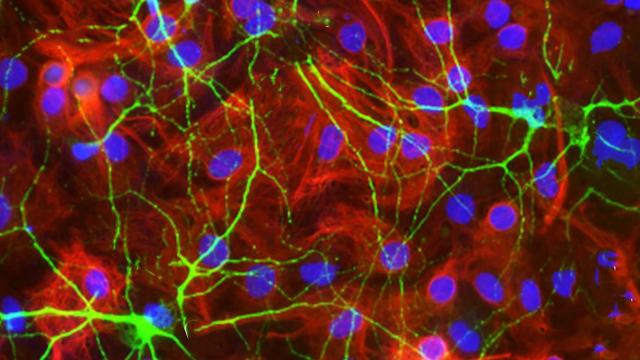It isn’t every day that scientists find a completely new aspect of human anatomy, but a study published this week in Nature Neuroscience is providing exactly that, describing a previously unknown network of tunnels located between the skull and the brain.
In mice, the newly discovered tunnels, or vascular channels, allow for the quick transport of immune cells to brain injuries brought on by stroke or other brain disorders. The tunnels were discovered by Matthias Nahrendorf, a professor at Harvard Medical School and Massachusetts General Hospital in Boston, and his colleagues as they were studying the way bone marrow produces and distributes immune cells throughout the body.
Importantly, the same anatomical features were also found to exist in humans. It’s quite likely that these vascular channels facilitate the same healing function in humans as they do in mice, but future research will be needed to prove it.
Red blood cells and other immune cells are produced within our bone marrow, a spongy tissue located within our bones. These immune cells help us to fend off infections and heal injuries, whether these injuries happen in our legs, hands, torso or even our brain. In fact, immune cells produced within our arms and legs can travel via the bloodstream to damaged tissue in the brain.
That said, scientists have wondered if these immune cells are produced and disseminated throughout the bone marrow of the entire body, or in select areas. The new study was an effort to answer this very question.
To learn more about this physiological process, Nahrendorf’s team used cell-specific dyes in mice, allowing them to visually track the movement of immune cells through the body.
In particular, they wanted to know if, after a stroke, immune cells that rush to the brain came from bone marrow in the skull, or if they came from the tibia, a large leg bone known to produce immune cells (both in mice and in humans), or both. The researchers honed in on a particular type of immune cell known as neutrophils, which are known to arrive very early at injury sites.
After inducing a stroke in the mice, the researchers watched as the skull provided more neutrophils to the injured brain tissue than the tibia. But when a heart attack was induced, the skull and the tibia seeded the heart with neutrophils in similar proportions.
Also, six hours after the stroke, bone marrow in the skull was far more depleted of its neutrophils than the marrow in the tibia. This suggests that skull marrow releases more cells to the site of a brain injury in the event of a stroke, and that bone marrow throughout the body isn’t uniformly distributing immune cells to treat tissue damage.
These observations also imply that the injured brain is somehow communicating with the bone marrow in the skull to facilitate the rapid response. The researchers say a molecule known as SDF-1 is the likely agent in this collaboration, setting off a localised immune response.
This is a very cool finding on its own, but it gets even better. Armed with these observations, the researchers then sought to figure out how the neutrophils were arriving at the injured tissue.
Using high-resolution scanners and microscopes, the scientists observed neutrophils moving through previously undetected tunnels in the skulls of mice. These tiny channels connected the marrow directly with the outer lining of the brain, known as the meninges. Prior to this discovery, scientists had observed larger veins traversing the skull, but not these small channels linking the bone marrow cavities to the meninges.
“Perhaps the channels were missed by other scientists because they are small,” Nahrendorf told Gizmodo. “You have to look for them with high resolution CT or microscopy to find them. Microcopy is rarely done on bone because it is technically challenging.”
Normally, blood flows through these channels from the inner portions of the skull to the bone marrow. After a stroke, however, the neutrophils were seen moving in the opposite direction, travelling towards the damaged tissue.
Importantly, similar vascular channels were also detected in scans made of human skulls (these scans were acquired during surgery). The channels seen in human skulls were five times larger in diameter than the ones seen in mice.
In terms of function, the action of the immune cells moving through the vascular channels were only observed in mice. Proving that it works the same way in humans as it does in mice, however, might be difficult.
“We cannot do this type of microscopy in humans because our skulls are too thick,” Nahrendorf explained to Gizmodo. “Right now I am thinking about how to address the question of translatability [between mice and humans], which is important. It’s on our list, but I don’t have an answer yet.”
In addition to this challenge, Nahrendorf’s team is hoping to identify other types of cells that might travel through these channels, and how these structures might contribute to healthy function or disease.
“We also need to check if these channels are important in inflammation of the brain,” he said. “We observed that cells migrate through them, but what happens if you stop this migration is unclear. We are currently thinking about studies that address this question, first in mice then in humans. Reducing inflammation in the brain could be important for many inflammatory conditions.”
Indeed, it’s hard to treat a condition when we don’t have the entire map. Thanks to this new study, human anatomy and physiological function just got a little less terra incognita.
